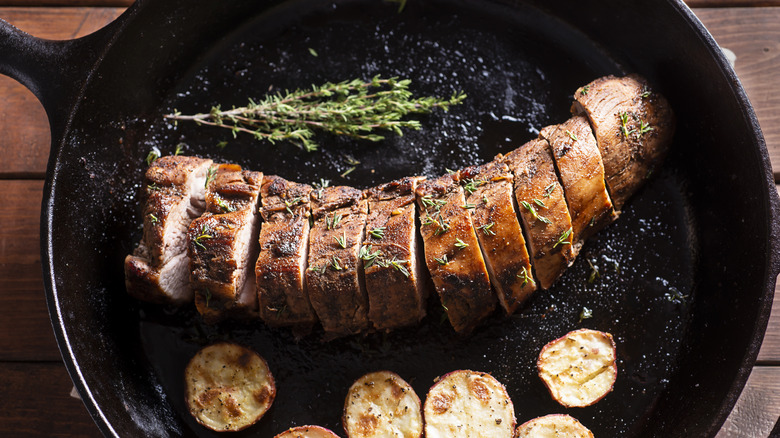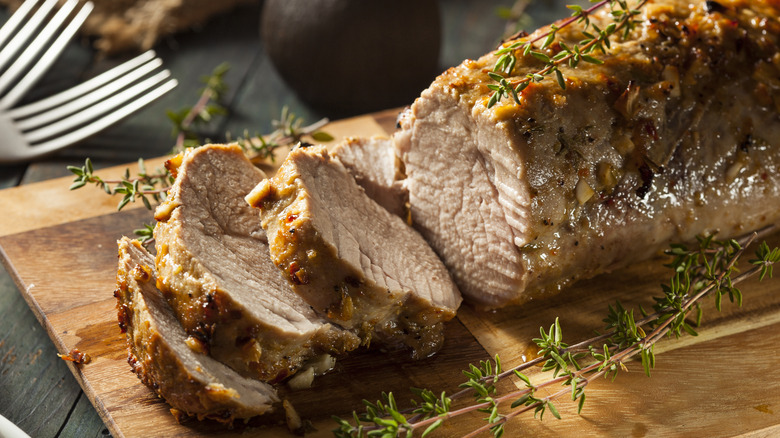A Cast Iron Skillet Is The Key To Pork Tenderloin With A Perfect Crust
Pork tenderloin is a favorite cut of meat for many people because it's lean, tender, and versatile. It cooks quickly and pairs well with various flavors, from simple herbs to robust sauces. The challenge with preparing this meat, however, is achieving a crust that's golden and crispy while ensuring the inside remains juicy and tender. This balance can be tricky. However, with a cast iron skillet, you can get it just right.
Cast iron is excellent for searing pork tenderloin because it retains heat incredibly well — which is necessary for a good char. Another benefit is the pan's natural nonstick surface. With proper seasoning, the skillet can give you a great sear without sticking or tearing the meat. This helps maintain the integrity of the crust, making sure it's as crispy and intact as you want it to be.
Additionally, cast iron skillets offer a unique advantage because they can go from stovetop to oven without a hitch. This is crucial for the two-step method for perfectly cooked pork tenderloin where you start by searing it on the stovetop, then finish cooking in the oven to ensure the meat is cooked entirely without drying out. The versatility of a cast iron skillet allows you to control the cooking process without needing to switch pans. Finally, there's the durability factor. Even with the high searing temperatures, a good cast iron skillet can last a lifetime if you take care of it.
How to sear pork tenderloin on a cast iron skillet
When preparing a simple roasted pork tenderloin, searing is the first step. Begin by preheating your cast iron skillet on the stovetop over medium-high heat. Allow it to warm up for a few minutes until it's smoking hot. While the skillet is heating, prepare your meat by trimming the sinews — leaving that silver skin intact is the biggest mistake you can make with pork tenderloin. Next, pat it dry with paper towels. This step is crucial because moisture can prevent the crust from forming properly. Finally, season the tenderloin generously with salt, pepper, and any other spices or herbs you prefer.
Once the skillet is hot, add a small amount of oil to coat the bottom of the pan lightly. This helps to create that initial contact between the pork and the hot surface without causing sticking. Carefully place the pork tenderloin in the skillet. You should hear a satisfying sizzle. Let the pork sear without moving it for two to three minutes on each side, or until you see a golden-brown crust forming. It's important to resist the urge to move or flip the meat too early, as this can disrupt the searing process. Once you have a nice crust on all sides, transfer the skillet to a preheated oven to finish cooking.

